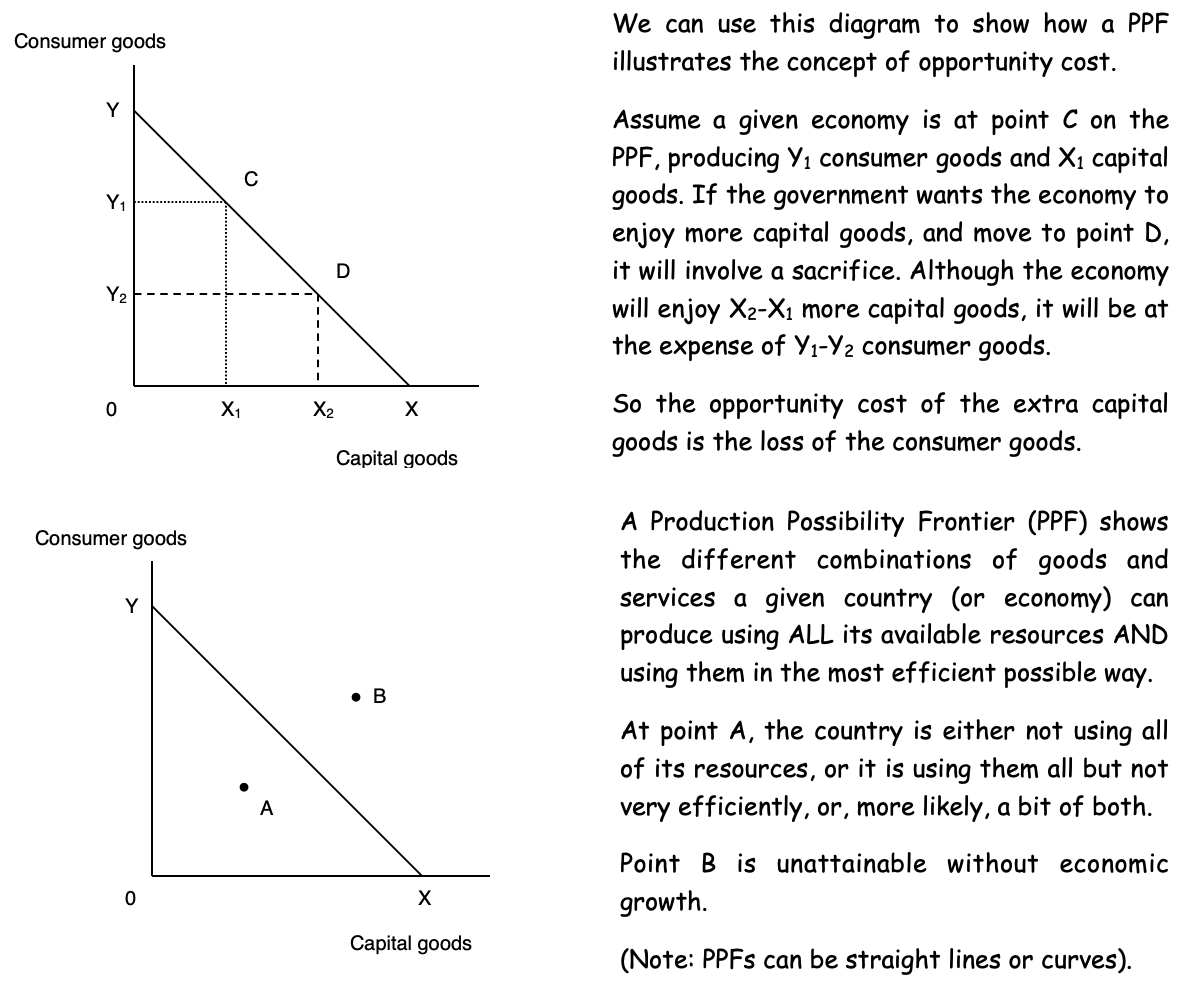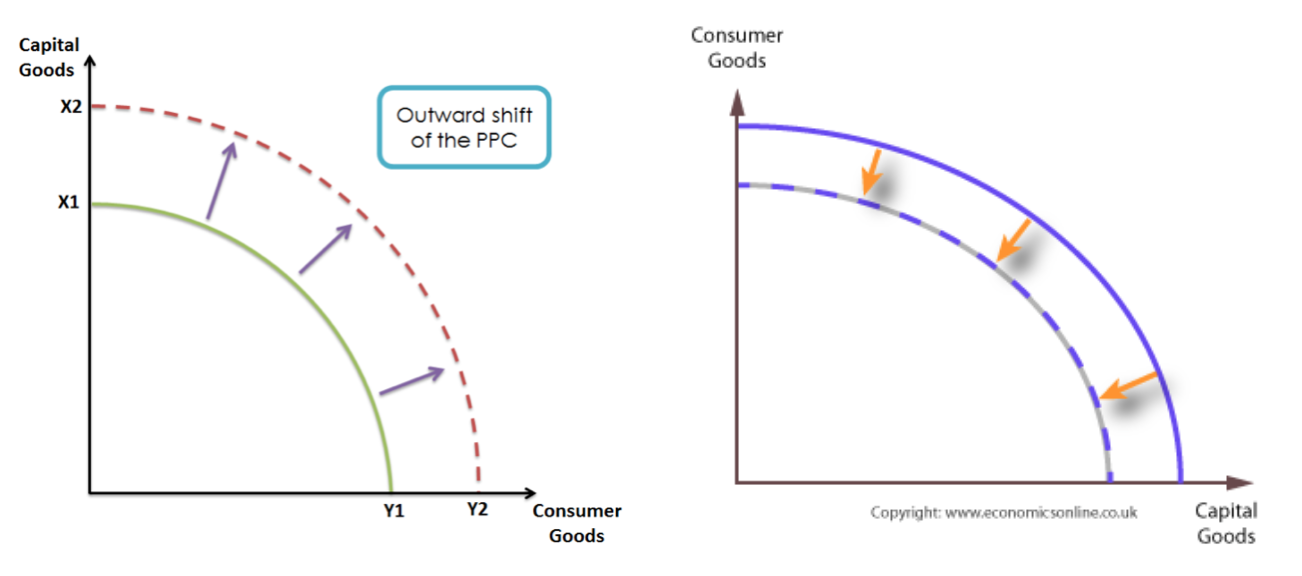1.1.1 Economic problem
Scarcity
The basic economic problem is also known as scarcity (resources are finite but wants are infinite). Scarce resources mean that decisions need to be made regarding what, how, why and for whom goods and services are produced. Economics can be used as a tool when choosing between the competing demands placed on the available resources.
Scarcity generally involves non-renewable resources such as oil, natural gas, coal, nuclear energy. They are resources that cannot be readily replaced by natural means at a quick enough pace to keep up with consumption. Other energy sources are renewable such as solar, wind etc.
Scarcity can also involve renewable resources if they are being consumed quicker than they can be replaced. E.g. over-fishing. Renewable resources are elements that can be replenished over time through natural processes such as farming. E.g. crops, meat etc.
Opportunity cost
Scarce resources mean that choices have to be made and, in doing so, there is an opportunity cost. Opportunity cost is the next best alternative to the choice you already made. Opportunity cost measures the cost of any choice in terms of the next best alternative foregone.
This is a massive concept in economics. It is all about sacrifice. The following sentence defines it pretty well:
Opportunity cost is the sacrifice made in satisfying one set of wants instead of another in the situation of scarcity of resources. Some economists prefer to think of this sacrifice in terms of the lost benefits of the next best alternative. In exams, either could be used, so you should be aware of both.
Supposing you receive $10 pocket money each week. The opportunity cost of spending this on sweets is the clothes you could have bought instead.
Economists often use examples on a bigger scale. For example, given that a government’s funds for any given year tend to be fixed (based on the political difficulty of raising taxes!), then they have to make difficult choices. If the government decide to spend more on defence (the Iraq war?) then they might have to spend less on education. The opportunity cost of increasing spending on defence is the reduced spending on education.
Opportunity cost can also be applied to producers. E.g. Firms have limited finance, so if they invest in one project, the opportunity cost is the loss of earnings in another project.
Production Possibility Frontiers

Consumer and capital goods
Consumer goods are goods that are used by consumers with no future use. E.g. chocolate bars, sofas, televisions. Capital goods are goods used by businesses to make consumer goods. E.g. buildings, machinery, tools etc.
There is a trade-off between the short and the long run. E.g. an increase in the production of capital goods (and therefore a decrease in the production of consumer goods) will result in the short run, the economy must use resources to produce capital rather than consumer goods. Standards of living are reduced in the short run, as resources are diverted away from private consumption. However, in the longer run the increased investment in capital goods enables more output of consumer goods to be produced. This means that standards of living can increase by more than they would have if the economy had not made the short-term sacrifice. This causes economic growth in the long run.
Shifts in the PPF
An outward shift demonstrates economic growth (an increase in the productive potential of the country). Such a shift can be caused by an increase in the quantity or quality of the factors of production. The 4 factors of production are land, labour, capital and enterprise.
Land includes all natural physical resources. Labour includes human input (workers). Capital is goods used in production to make other goods. Enterprise is the skills of the workforce.
Very occasionally, the PPF shifts inwards and would be seen as economic decline; for example, cause by civil war or a natural disaster such as a hurricane or earthquake.
Note that any point on the PPF is a productively efficient point where the factors of production are being used to their maximum potential. Any point inside the PPF is inefficient – some of the factors of production are unemployed or under employed.

Positive economic growth
Short run or actual growth occurs when an economy uses the resources it has more efficiently. This will result in a movement of an economy closer to the productive potential.
Long run or potential economic growth occurs when there is an increase in the quality and/or quantity of the factors of production (land, labour, capital and enterprise). E.g. improvements in education. This will shift the PPF out.
Negative economic growth
If resources are not used efficiently, there will be a movement within the PPF. E.g. if there is an increase in unemployment.
The PPF will shift in if there is a decrease in the quantity or quality of the factors of production. E.g. due to war or natural disasters.